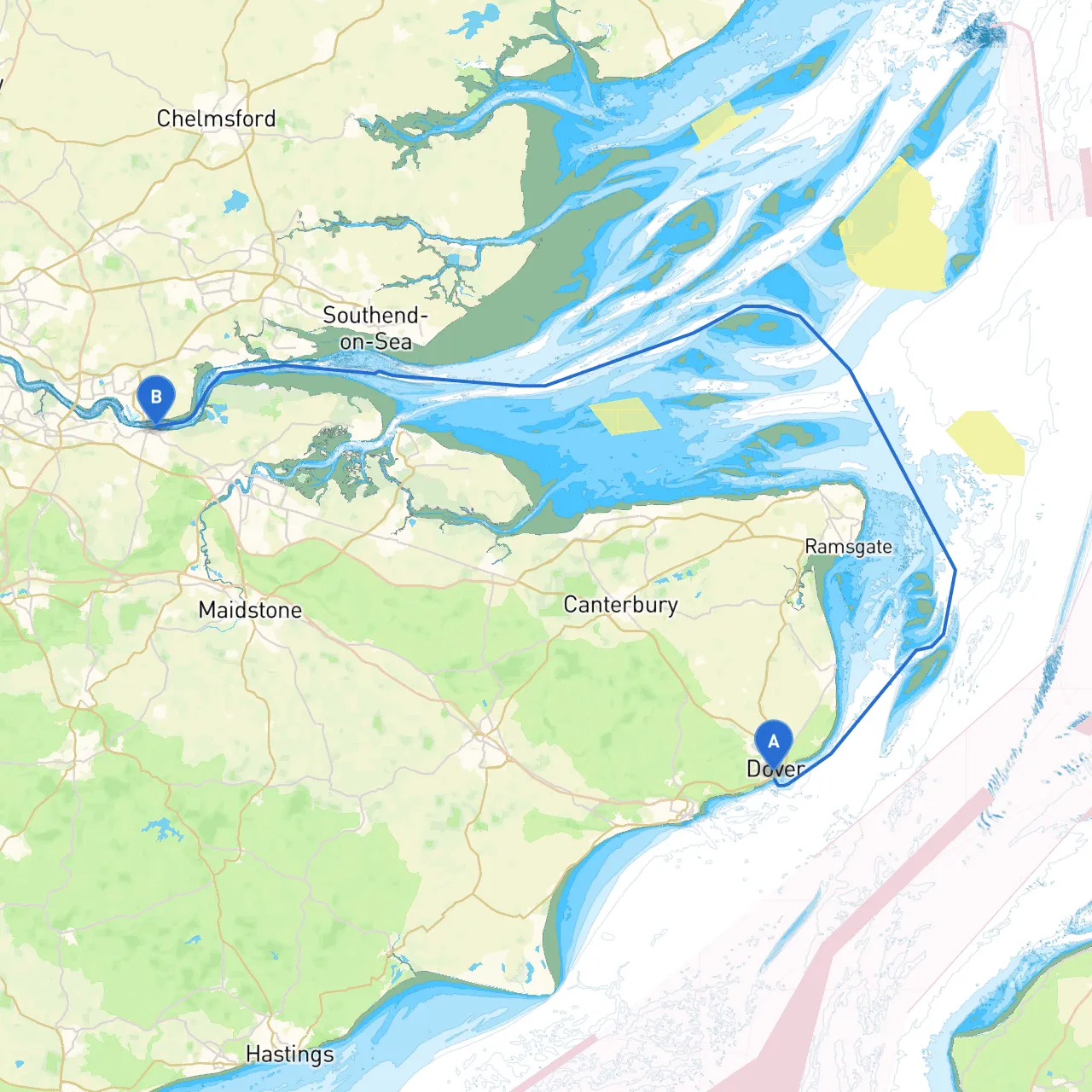

Pilotage Plan: Dover, GB to Gravesend, GB
Overview Embarking on a boat trip from Dover to Gravesend offers a delightful mix of coastal exploration paired with the charm of the River Thames. This route is well-suited for mid-level to experienced boaters, as it requires astute navigation, respect for tidal flows, and a keen awareness of local marine traffic, particularly as you approach the estuary and bustling waterways of London.
Route Description Starting at Dover, noted for its iconic white cliffs and bustling ferry port, your journey will take you along the stunning southeastern coastline before transitioning into the broader waters of the Thames Estuary.
1. Departure from Dover Begin your journey at the busy port of Dover. As you set off, keep a watchful eye on the ferry lanes; traffic can be busy with ferries operating frequently to and from Calais.
2. Navigational Aids Pay particular attention to the Dover Harbour Light and the South Foreland Lighthouse, both providing critical maritime information. The shimmering cliffs provide a natural landmark but stay clear of the steep cliffs to avoid unpredictable currents.
3. Point of Interest: Deal and Walmer Castles About 6 nautical miles southeast, you may consider a brief stop at Deal or Walmer, both of which host historic castles and beautiful beaches. These picturesque towns not only offer a place to stretch your legs but also provide opportunities for dining and exploring local heritage.
4. Channel Crossing Once past Deal, head toward the Broadstairs area, then bear northwest towards Folkestone. The water here can get choppy, so be prepared for changing conditions. Ensure to monitor wind and tidal patterns closely, choosing a course that aligns best with your vessel’s capabilities.
5. Approaching the Thames Entering the Thames Estuary, it is vital to remain alert due to shipping traffic. The Medway Traffic Separation Scheme is in play; adhere to the outbound and inbound channels marked by buoys and navigational markers. This is where the Sea Traffic Service is operational, providing real-time traffic information.
6. Shelter Options If conditions worsen en route, consider seeking refuge in Walton-on-the-Naze or Purfleet, both of which offer harbors where you can drop anchor.
7. Landmarks Along the Thames As you travel upriver, the iconic Thames Barrier and surrounding architecture signal your proximity to central London. Make sure to slow down and keep to the designated channels, noting the busy nature of this area.
8. Final Approach to Gravesend Gravesend approaches quite dramatically as the river narrows. Keep an eye out for the Gravesend Pier, a good spot for mooring. Keep clear of commercial vessels and adhere to all local maritime regulations, including speed limits in the river.
Safety Considerations
Conclusion This route from Dover to Gravesend offers not only stunning scenery and the thrill of navigating through one of the busiest waterways in the UK but also sufficient opportunities for safe harbor and exploration. It’s an adventure perfect for skilled boaters eager to combine the excitement of the sea with the allure of historical legacies along England’s southeast shoreline. As always, remember to prioritize safety and enjoy a journey filled with breathtaking views and engaging maritime experiences.